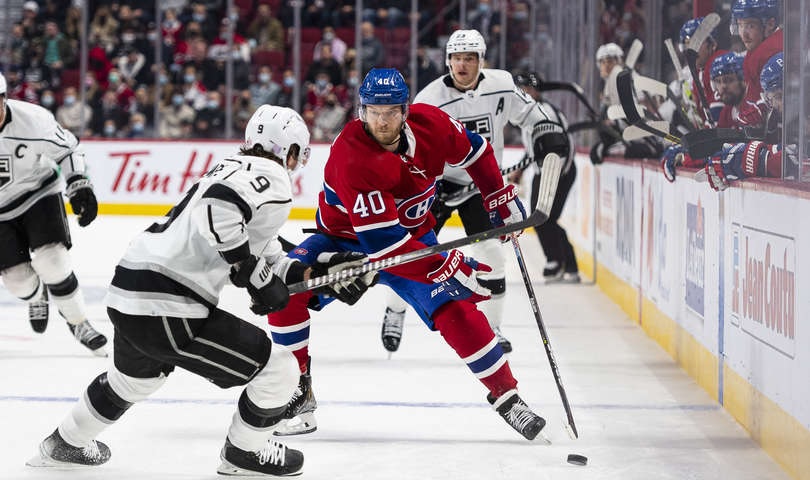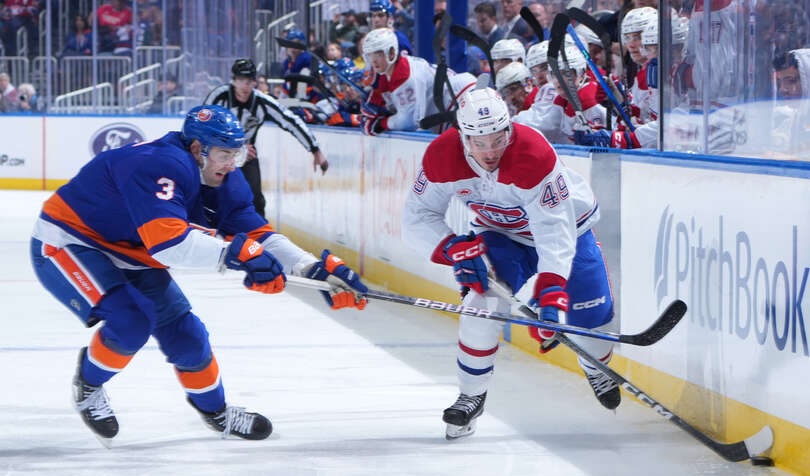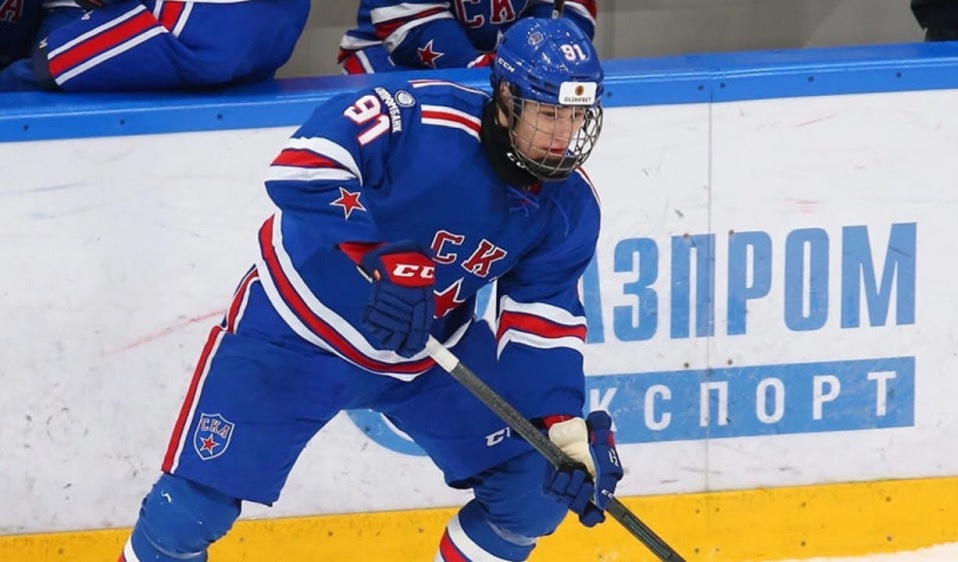HabsWorld.net --
Managing trade assets efficiently is important in any rebuild, so getting the best return from Montreal’s forward group requires some careful planning.
The idea is to maximize the return for each traded asset, while at the same time keeping the rebuild rolling in the right direction in a 2022-23 NHL season where the Habs are more likely to compete for a lottery pick than a playoff berth.
The easiest players to deal at the trade deadline are pending UFAs Paul Byron, Jonathan Drouin, Evgenii Dadonov, and Sean Monahan. None will be re-signed, with the possible exception of Monahan, an intriguing wild card after coming from Calgary in a trade following season-ending hip surgery. Getting what you can for each of these players before they walk is just good business.
And while there’s a chance a roster forward or two will be moved before training camp to clear the logjam up front, one of this season’s goals should be about maximizing the return for forwards with term left on their contracts who aren’t expected to be part of the rebuild. Until more is known about their long-term futures with the team, that probably leaves out Brendan Gallagher and Josh Anderson. But here are three forwards who, for one reason or another, didn’t live up to their contracts last season and will almost surely be traded this season or next summer. If general manager Kent Hughes doesn’t want to be dealing with stranded assets when it comes time to part with these players, they need to be showcased in roles that suit their skill sets:
Joel Armia: One of the unsung heroes from the 2020-21 Stanley Cup Final run, Armia was rewarded for his solid and steady play with a four-year deal to start the 2021-22 season that carried a $3.4M cap hit. He promptly fell on his face – to be fair, along with just about every other previously productive forward on the roster – and managed just 14 points in 60 games. Injuries, COVID-19, and inconsistent play all contributed to his lack of production, much like the previous season, but at age 29 he won’t be part of any rebuild.
Placed in a position to succeed on either wing in a top-nine role (and, hopefully, staying free of injury), a back-in-form Armia could be a player that fetches a decent draft pick or prospect in any future deal, whereas now he’s viewed as little more than a salary dump. But NHL GMs have notoriously short memories. When Armia’s game is on track, it’s a good one – the 6’4”, 215-lb. Finn is a defensively responsible player who can play both wings, is a quality penalty killer and can be quietly effective in the offensive zone with a hard and accurate shot, decent passing skills and strong work on the boards.
Mike Hoffman: Hoffman, 32, is another generally consistent winger who didn’t show well in his first season with the Canadiens after signing a three-year contract with a $4.5M cap hit last summer. A consistent scoring threat who can usually be relied on for at least 20 goals and 60 points, injuries limited him to 65 games last season where he collected just 35 points. The expectation that he’d make Montreal’s power play respectable again didn’t work out as planned, with the Habs ending up 31st in the league on the man advantage.
Like Armia, Hoffman doesn’t have a great deal of value right now, but any indication this season that 2021-22 was just a down year would go a long way in stirring up interest in this asset. Not much of a defensive player, the 6’, 185-lb. left-hand shot’s calling card is his scoring-line calibre offence, so a top-six role on either wing would be his best showcase. He gets most of his offence from an elite shot that he can score with from just about anywhere. Hoffman is also a good playmaker. If he stays healthy and gets the minutes he needs, the production should return enough to bring back a good pick or a good prospect.
Christian Dvorak: It’s unlikely the Canadiens can recoup the first- and third-round picks sent to the Arizona Coyotes to acquire Dvorak as a replacement for Jesperi Kotkaniemi, lost to the Carolina Hurricanes via an offer sheet. Last season, the 6’1”, 200-lb. centreman picked up 11 goals and 22 assists in 56 games for the Habs, spending a couple of stretches on the disabled list. Dvorak, 26, has three seasons left on a six-year contract that carries a $4.45M cap hit, reasonable for a versatile centre who has averaged about 35 points a season since coming into the league as a second-round pick in 2014.
It’s somewhat surprising that a player who managed 100 points in his final two OHL seasons hasn’t shown more over five seasons in the NHL, but there’s a good chance he starts the season on Montreal’s second line, so that might change. If he stays injury-free and produces enough to keep his spot on a scoring line, there’s no reason why a centreman with a balanced 200-foot game and strong faceoff skills can’t get the Canadiens yet another first-round pick in an upcoming draft, either at the deadline or next summer.
As we saw last season, Hughes has a knack for leveraging as much as possible from the teams that he does his horse-trading with. The returns from the Tyler Toffoli, Ben Chiarot, Artturi Lehkonen, and Brett Kulak trades last season are all going to be important to the Montreal Canadiens’ rebuild.
With some time and effort, the returns for the three players profiled here might also help bring a return to the playoffs that much closer.


